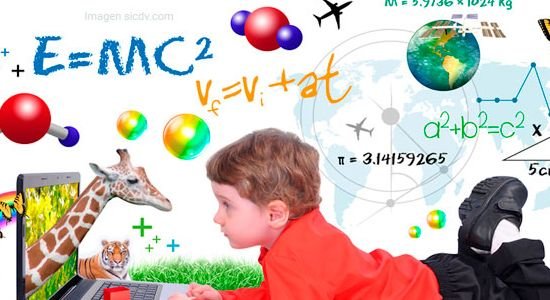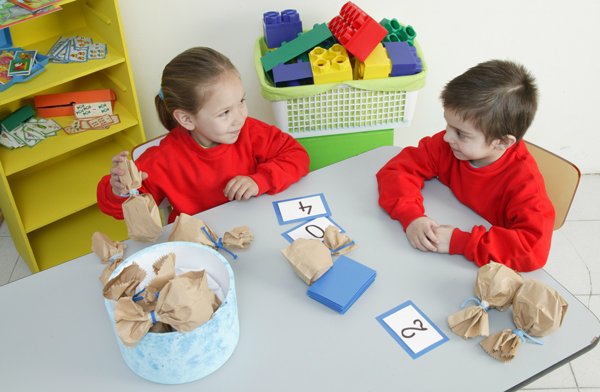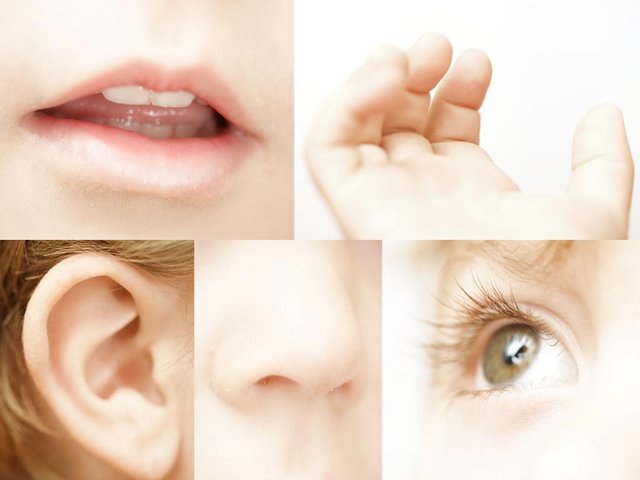Learning styles in children
To pretend that children conceive the world in the same way is to think that we all have the same tastes. Each child receives and assimilates the information through different channels and strategies. Therefore, you should not worry if your child does not perform a certain task successfully or does not enjoy any school subject. It may be due to different learning styles in children.
It is important that you give yourself the task of exploring with your children what are the means that facilitate their learning. When you can define them you can make a more effective accompaniment in their school tasks and take advantage of their full potential. Psychologist David Kolb raised his theory of learning styles for the first time in 1984. He believed that our individual learning styles emerge due to three causal factors: genetics, life experiences and environmental demands.
Auditory style: Children who have this learning style manage to easily capture information through the word. Although at times it seems that he is not paying attention, a boy who learns in this way listens and understands every word. Some characteristics of these small ones are:
Remember the information when they say it loud.
They need or prefer to explain things orally.
In some cases it is difficult for them to follow instructions in manuals or written texts.
They usually speak out loud while they are learning something new.
Prefer group discussions than independent work.
Show their emotions through the tone and volume of their voices.
They like to listen but they also enjoy talking.
Your descriptions of situations are usually long and thorough.
Remember names easily and can be distracted by sounds around.
They love music and usually sing while doing any activity.
"Our individual learning styles emerge due to three causal factors: genetics, life experiences and the demands of the environment" David Kolb
Visual style: As the name implies, they are people who learn things by seeing how they are made. To enhance their cognitive processes, they need to visualize and make illustrations that allow them to conceptualize them. Some distinctive features of these children are:
Remember details that seem insignificant about images, landscapes and faces.
They like to be able to see what they are explaining to them at all times. They need to have paper and pencil at hand to always have how to translate their ideas.
Prefer to follow the instructions that are written or see demonstrations of how things are done.
When they arrive at a place they look at what surrounds them and analyze the context.
With their gestures and looks demonstrate their emotions. Their facial expressions speak for themselves.
Can describe without problem the mental images that are created.
The ability to listen is not your main strength because you can concentrate better on what you see.
Remember better the words they see written. That is why his notebooks are often full of information.
Plan in advance what you are going to do. They organize their tasks when they put them in writing.
They are children able to read. They usually have a good calligraphy.

source
Asset Style: Students who prefer active learning styles enjoy new experiences, are not skeptical and have an open mind. They do not mind learning a new task, because they do not avoid challenges, even though that may compromise their idea of themselves and their abilities.
Reflective Style: Individuals with a preference for reflective learning style observe experiences from different angles. They also analyze data, but not before having reflected with determination. They are prudent and do not rush to draw conclusions from their experiences, so they may seem hesitant.
Kinesthetic style: They are children who enjoy when they are actively involved in their learning processes. The ways to enhance their skills are crafts and movement. Further:
They look for a way to apply everything they see and what they hear. Your best tool is action.
They usually move their hands while talking. Touch is a very important sense for them.
In many cases the kinesthetic style is confused with hyperactivity. What really happens with some children is that they need to move to focus better.
Demonstrate their emotions through body posture.
They lose interest quickly when they must remain quiet for a long time. Speeches or prolonged presentations bore them in a short time. They need to participate directly in what they learn.
Remember better what they did than what they saw or heard. Experiential learning stays forever in their memories.
They like to have physical contact with people who have their affection. For them, closeness with their peers is important.
Because visual associations are not your strong point, they can have bad spelling.
They like interactive books that not only contain words. The more you can experiment with a text, the more you will enjoy it.

source
Theoretical style: They usually have a perfectionist personality. They are also analytical, but they like to synthesize and seek to integrate the facts into coherent theories, without leaving loose ends and unanswered questions. They are rational and seek to remain objective first and foremost.
Pragmatic style: They are rather practical and need to check their ideas. They are realistic when making decisions and solving an issue, and direct their learning towards the need to give answers to specific problems. For them, if it is useful, it is valid.
Whatever your child's learning style, the important thing is to find tools to enhance it. For children to properly develop all their skills it is advisable to identify how they construct knowledge more easily.

Love this post! It is so important that we remember that children and even adults all learn differently.
She is such a friend, we focus on children alone and we also need those styles to learn.
Thank you for your support @Steemiteducation, together we can give strength to this beautiful community.